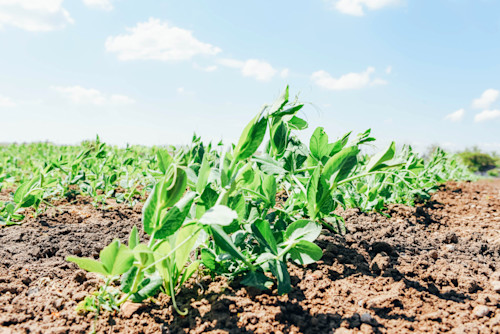Friday, October 29, 2021, 9 a.m. – Experts at the Canadian Institute for Climate Choices say many businesses in Canada will see both victories and challenges as the world moves towards a low-carbon future.
Next month, the small town of Portage la Prairie, Manitoba, 75 kilometers west of Winnipeg, will celebrate the grand opening of the largest pea protein factory on Earth.
Roquette Canada, a division of French food giant Roquette, built the 200,000 square foot plant at a cost of $ 600 million, to capitalize on growing North American demand for alternative proteins.
This demand is increasing, in part because the production of plant proteins – key ingredients in a range of products, including leading foods like Beyond Meat – generally emits much less carbon than animal sources.
While the plant’s 120 permanent full-time jobs are a clear boon to the city of 14,000 and surrounding communities, investments like Roquette’s are needed in all regions of Canada – in all kinds of different industries. – if this country wants to prosper and succeed in its transition into a global economy that is rapidly evolving towards a low-carbon future.
This is the key message of a one-of-a-kind report just released, titled “Swim or swim,” prepared by a multidisciplinary team of experts for the Canadian Institute for Climate Choices.
It is also particularly timely, a few days before the start of the COP26 United Nations Climate Change Conference, where Canada and other countries reaffirm the accelerated emission reduction targets for 2030 to help achieve the goal of achieving global net zero carbon by 2050.
“The green wave is fast approaching. Big changes in global markets bring big opportunities, but also big risks, ”the report says.

Sunset over biogas collection wells in an open grassland section of Frédéric-Back Park, Quebec. (Alain Beauchesne / iStock / Getty Images Plus)
THE WORLD IS MOVING
Rachel Samson, one of the report’s lead authors, pointed out in an interview with MétéoMédia that while the science on climate change is solid and clear, it is above all about recognizing the reality of an economic transition.
“The rest of the world is moving on this,” Samson said. “Investors are taking action to reduce emissions. Policies change. Technological costs are falling. In this context, Canada must really act in order to maintain its competitive position in the world.
The aim of the report was not to identify low-emission sectors and activities – for the most part these are known. Instead, the researchers wanted to know how well or poorly Canadian companies across different sectors are positioned to succeed in the low-carbon transition and use those findings to inform investment decisions and policies.
What they found was disturbing.
“Canada is not ready,” the report said. “Big investments don’t happen on the scale they need. Businesses are vulnerable to sudden changes in global markets or investor sentiment. Promising companies that could drive future growth find it difficult to attract funding. And there are limited plans to protect and empower the workers and communities most affected by the change. “
CORPORATE STRESS TESTS
Different industries require different strategies and solutions. To help get a clearer picture, the researchers performed ‘stress tests’ on all publicly traded Canadian companies under future carbon reduction policy scenarios, then grouped them into three categories – creating demand, carbon costs and falling demand – depending on which of these “drivers” affected their profit the most.
The first category includes companies in sectors such as electric batteries and energy storage, which primarily need to create more demand to be successful. The second, which includes heavy mining and manufacturing companies, has seen its profits reduced due to rising carbon costs; to be successful, they must reduce their emissions. The third, which includes oil, gas and coal companies, is facing declining demand and must look to new lines of business.
In a true climax, the authors were then able to use these findings to identify the most at-risk businesses and communities across the country.
“This is the first Canadian report that does this, so I think it’s very, very important,” Lisa DeMarco, senior partner and CEO of Resilient LLP, a Toronto-based law firm, told The Weather Network. in climate and clean energy.
The most striking in these results? No province or territory is exempt. Thus, while those heavily dependent on oil and gas have the highest proportion of workers in sectors vulnerable to transition (Alberta is first at 9.1%), a province like Ontario, with more of workers and a high dependence on the transport sector, also has several thousand workers exposed (5 percent).
“For workers, the stakes are particularly high in terms of what businesses and governments are doing to manage the transition,” added Samson.

“Evil alcohol lover. Twitter junkie. Future teen idol. Reader. Food aficionado. Introvert. Coffee evangelist. Typical bacon enthusiast.”
